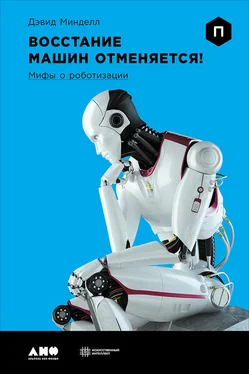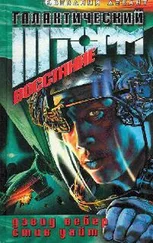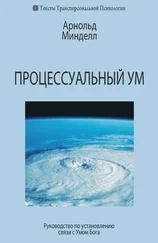Космические обозреватели рассматривали «Хаббл» как первую «вероятную жертву»:Daniel Morgan, «Hubble Space Telescope: Should NASA Proceed with a Servicing Mission?» Congressional Research Service Reports , January 1, 2006: 3.
Его недоверие было подкреплено заключением:A ssessment of Options for Extending the Life of the Hubble Space Telescope: Final Report , http://www.nap.edu/catalog.php?record_id=11169, accessed July 4, 2014.
Артур Уиппл, инженер – разработчик систем:Arthur Whipple, «A Comparison of Human and Robotic Servicing of the Hubble Space Telescope.» Презентация на телеконференции «Будущее космических операций» (Future In-Space Operations, FISO) 14 октября 2009 года.
имелось более сотни полностью новых инструментов: Jill McGuire, «HST Crew Aids and Tools: Working in Space Today and Tomorrow» – презентация в Центре космических полетов имени Годдарда 14 сентября 2009 года. Фотографии миссии см. в книге: Dennis R. Jenkins and Jorge R. Frank, Servicing the Hubble Space Telescope: Shuttle Atlantis, 2009 (North Branch, MN: Specialty Press, 2009).
«Все продвигалось просто мучительно медленно»:Слова Стивена Сквайерса, которые цитируются в книге William J. Clancey, Working on Mars: Voyages of Scientific Discovery with the Mars Exploration Rovers (Cambridge, MA: MIT Press, 2012), 129.
«она лучше всего выполняется одним или двумя геологами»:Комментарии Кипа Ходжеса на симпозиуме по исследованиям с помощью телероботов, который прошел в Центре космических полетов имени Годдарада NASA 2–3 мая 2012 года, http://telerobotics.gsfc.nasa.gov, accessed July 3, 2014.
Историк Наоми Орескис указывает:Naomi Oreskes, The Rejection of Continental Drift: Theory and Method in American Earth Science (New York: Oxford University Press, 1999).
«Хорошо обученный астронавт может говорить о тех же вещах, что и хорошо обученный геолог»:Interview with geologist, March 2005, notes in the author's possession.
описывает работу по программе «Аполлон» как «в основном связанную с телеуправлением»:Comments by Kip Hodges at Exploration Telerobotics Symposium.
Хид подчеркивает, что немаловажно было также давать астронавтам «волю»:Jim Head and Dave Scott, discussion with the author at «Engineering Apollo» class at MIT, April 2013.
не так давно работал над проектами подобных машин:Akil J. Middleton, «Modeling and Vehicle Performance Analysis of Earth and Lunar Hoppers,» Thesis, Massachusetts Institute of Technology, 2010. P. Cunio et al., «Further Development and Flight Testing of a Prototype Lunar and Planetary Surface Exploration Hopper: Update on the TALARIS Project» in AIAA SPACE 2010 Conference & Exposition , American Institute of Aeronautics and Astronautics.
рекорд в общей дальности езды аппарата по иной планете:«NASA's Long-Lived Mars Opportunity Rover Sets Off-World Driving Record,» NASA news release, July 28, 2014.
«синдром межпланетной смены часовых поясов»:Zara Mirmalek, «Solar Discrepancies: Mars Exploration and the Curious Problem of Inter-Planetary Time,» PhD Dissertation, University of California – San Diego, 2008.
он заинтересовался опытом удаленного присутствия ученых:All Clancey quotes from William J. Clancey, «Becoming a Rover,» in Simulation and Its Discontents , Sherry Turkle, ed. (Cambridge, MA: MIT Press, 2009), 107–127, or William J. Clancey, Working on Mars: Voyages of Scientific Discovery with the Mars Exploration Rovers (Cambridge, MA: MIT Press, 2012).
«Мое тело – это всегда ровер»:Quoted in Clancey, «Becoming a Rover,» 7, 45, 118. For scientists' bodily involvement in the rovers, see Janet Vertesi, «Seeing Like a Rover: Visualization, Embodiment, and Interaction on the Mars Exploration Rover Mission,» Social Studies of Science 42 (2012): 393–414.
он зачастую выражается так, будто бы сами члены команды были на Марсе:Steven Squyres, Roving Mars: Spirit, Opportunity, and the Exploration of the Red Planet (New York: Hyperion; London: Turnaround, 2006).
«склоне прямо перед нами»:Squyres, quoted in Clancey, Working on Mars , 100. Also see Squyres, Roving Mars, 100.
«который вызывает у своих участников чувство синергетического взаимодействия»:Clancey, Working on Mars , 58.
фундаментальную ошибку:Комментарии Джима Белла и Джейка Бличера на Exploration Telerobotics Symposium, NASA Goddard Space Flight Center, May 2–3, 2012, http://telerobotics.gsfc.nasa.gov/, accessed July 3, 2014. См. также: Clancey, Working on Mars , 129–137.
Один из инженеров – конструкторов автоматики марсохода был «удивлен»:Clancey, Working on Mars, 117– 121.
конгрессмены предпочитают говорить о «присутствии человека в космическом пространстве»:Dan Lester, «Achieving Human Presence in Space Exploration,» Presence 22, no. 4 (Fall 2013): 345–349.
Дэн Лестер и его коллега по работе в NASA Харли Торнсон отстаивают:Dan Lester and Harley Thronson, «Human Space Exploration and Human Spaceflight: Latency and the Cognitive Scale of the Universe,» Space Policy 27, no. 2 (May 2011): 89–93.
ГЛАВА 6. АВТОНОМНОСТЬ – УТОПИЯ. НО ЧТО ДАЛЬШЕ?
«У меня нет даже карт Исландии такого качества»:Из авторского интервью с Даном Йоргером, Вудс-Хоул, штат Массачусетс, август 2011 года. D. R. Yoerger, A. M. Bradley, M. H. Cormier, W. B. F. Ryan, and B. B. Walden, «High Resolution Mapping of a Fast Spreading Mid-Ocean Ridge with the Autonomous Benthic Explorer,» 11th International Symposium on Unmanned Untethered Submersible Technology (UUST99) , Durham, New Hampshire, August 1999.
Йоргер и его команда разработали методы:Christopher German, Dana R. Yoerger, Michael Jakuba, Timothy M. Shank, Charles H. Langmuir, and Ko-ichi Nakamura, «Hydrothermal Exploration with the Autonomous Benthic Explorer,» Deep Sea Research Part I: Oceanographic Research Papers 55, no. 2 (February 2008): 203–219.
Читать дальше
Конец ознакомительного отрывка
Купить книгу


![Владимир Поселягин - Восстание машин [СИ,с издат.обложкой]](/books/29258/vladimir-poselyagin-vosstanie-mashin-si-s-izdat-obl-thumb.webp)









